How to: Status Page
Introduction
The status page is used to share the status of a survey, and response progress with stakeholders. It is a public page that can be accessed from your SurveyOptic system, which can be shared as a link to other stakeholders for real-time communication, without the need to create an account and password, or repeatedly respond to adhoc email requests.
Setting up a status page
To set up a status page, click on the Messages tab in the Edit Survey page and select [+ Add status page] to add the Status Page text editor. You can create an HTML page using this editor. This can include standard formatting and images. Below is an example status page for a survey which is still open: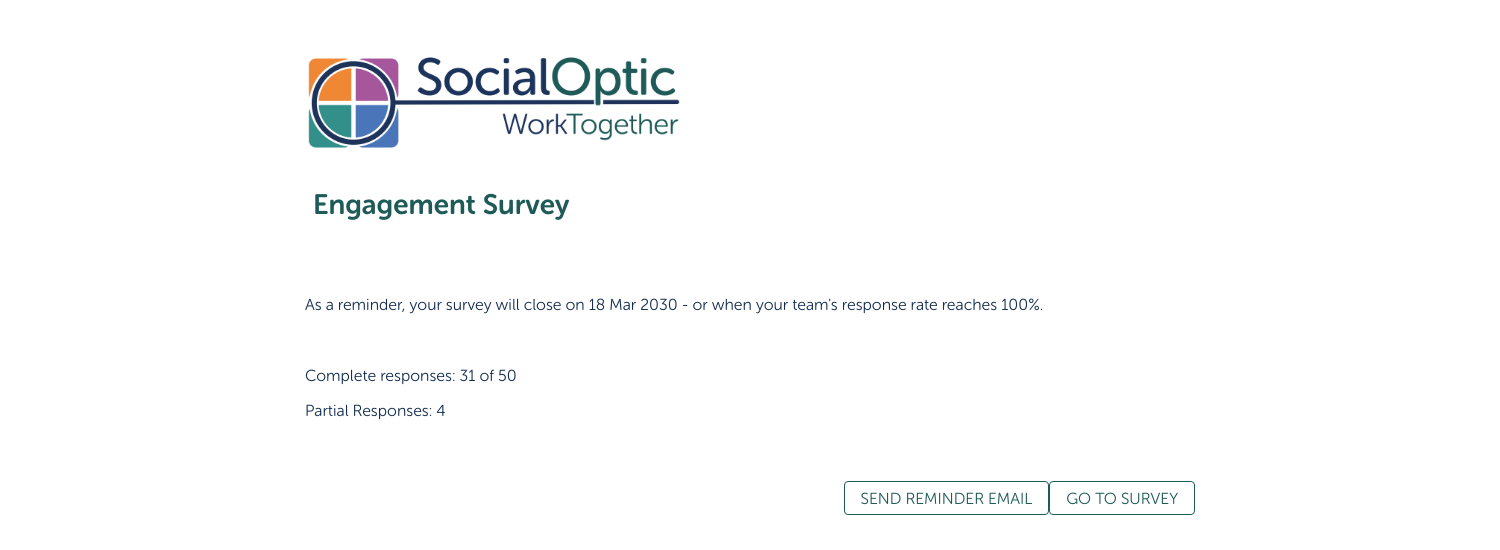
In this example there are several pieces of text which have been generated using the substitution functionality built into SurveyOptic. They are: the survey close date, how many respondents have completed the survey, the maximum number of respondents; and the number of partial responses. Using substitutions here allows the data to be drawn from SurveyOptic and remain current whenever this page is viewed.
- Include the close date of the survey by including a "
{{closes}}" substitution in the body of the message. - Add the number of complete responses by adding a "
{{complete}}" substitution in the body of the message. - Add the maximum number of respondents by adding a "
{{maxrespondents}}" substitution. - Add the number of partial (or "in progress") responses by adding an "
{{inprog}}" substitution.
When complete, your text editor should look something like this:As a reminder, your survey will close on {{closes}} - or when your team's response rate reaches 100%.
Complete responses: {{complete}} of {{maxrespondents}}
Partial Responses: {{inprog}}
This is a great start, but we also need to address the case where the survey has closed. See the example below: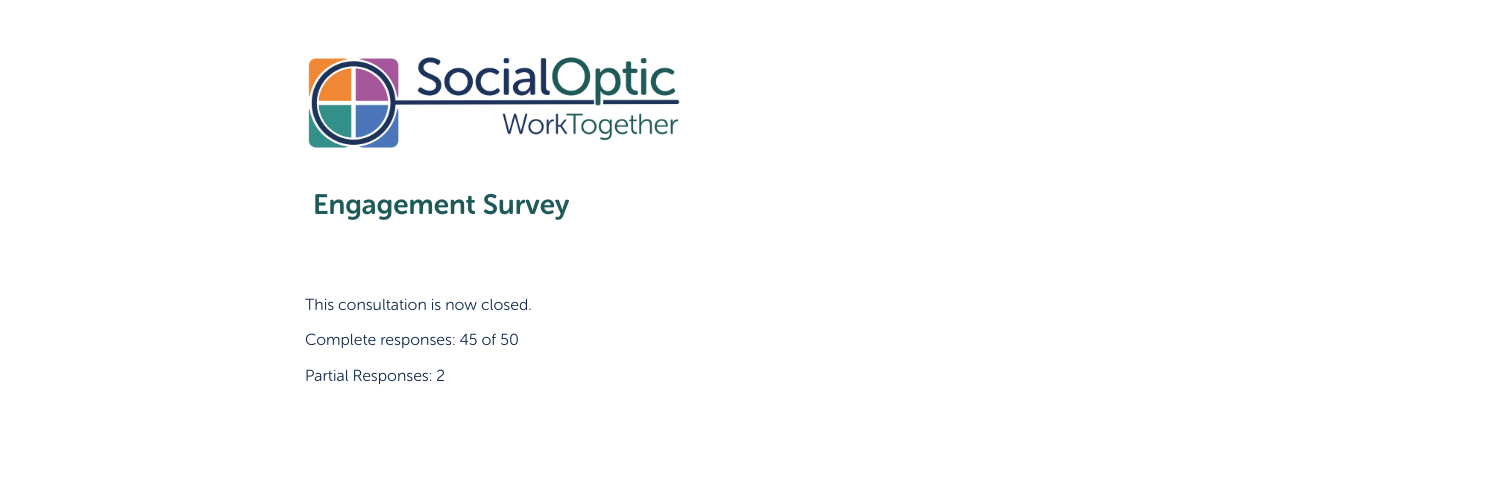
This is achieved by using conditional logic substitutions:
- Wrap the text which is only relevant to an open survey (in this case the "As a reminder…" sentence) in conditional substitutions, using "
{{^closed}}" at the start and "{{/closed}}" at the end. This will hide the wrapped text in the case of a closed survey. - Wrap the text which is only relevant to a closed survey (in this case the "Your survey is now closed" sentence) in conditional substitutions, using "
{{#closed}}" at the start and "{{/closed}}" at the end. (please note the use of the "#" in this instance, instead of a "^" symbol). This will hide the wrapped text in the case of an open survey, revealing the text once the survey has been closed.
When complete, your text editor should look something like this:
{{^closed}}As a reminder, your survey will close on {{closes}} - or when your team's response rate reaches 100%.{{/closed}}
{{#closed}}This consultation is now closed.{{/closed}}
Complete responses: {{complete}} of {{maxrespondents}}
Partial Responses: {{inprog}}
When you are finished, you will be able to share a link to the status page. To get the link, visit the Surveys page and click on the [Status page] button of your survey. This opens the page in your browser, from there you can copy the URL and share.
For more information on using substitutions in this way, please refer to our document "Explained – Mustaches".
Notes:
The status page url will change when the survey is linked to a template. In this instance, the new link can be copied from the [Status page] button from the Surveys page as above.
Should you wish to disable the status page, you can do so by removing the text from the status page message editor. If later you wish to re-instate the Status Page, simply add text back into the message editor and the page will be available again at the same link as before.
Advanced features
In addition to the above, there are more features that can be implemented if desired.
Including the survey link
Buttons can be added to the status page by using the "{{{controls}}}" substitution in the body of your text editor. Doing so will add a [Go to survey] button which viewers can use to take the survey as a respondent if they have not already done so: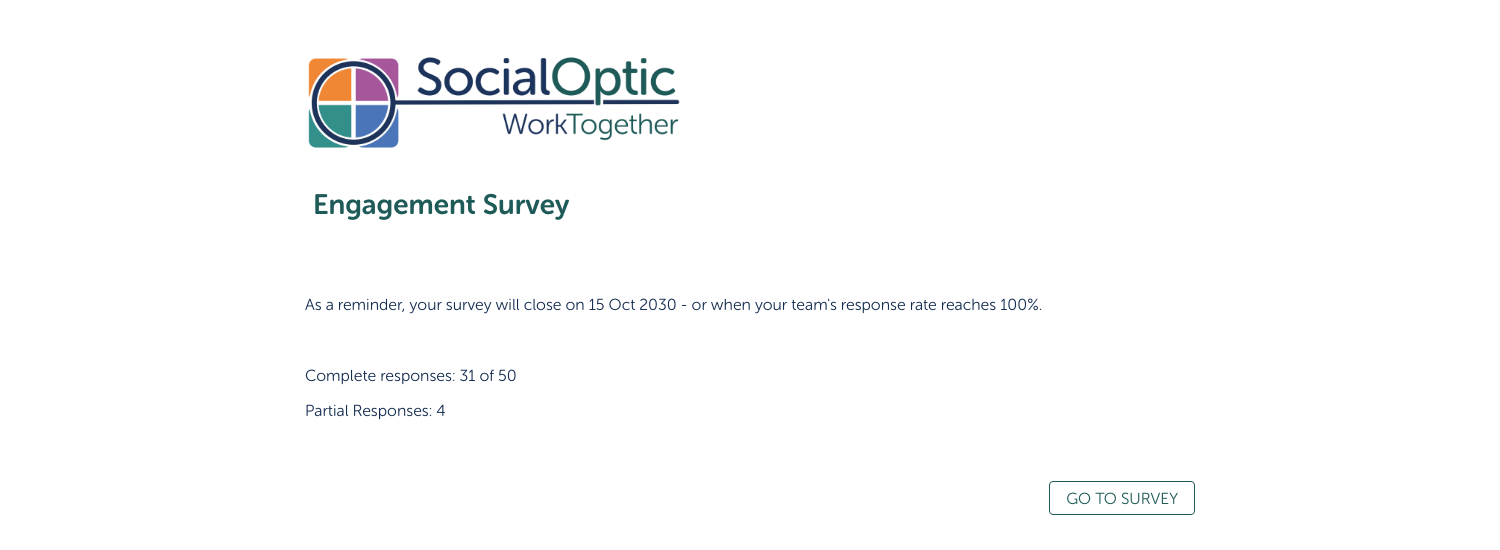
Once the Survey is closed, this button will be hidden.
Survey manager email controls
If manager emails have been set up, the "{{{controls}}}" substitution will include contextual buttons on the status page.
When a survey is open, the {{{controls}}} substitution will display a [Send reminder email] button. When clicked this will email the Survey Manager, prompting action such as encouraging respondents to complete the survey. Once the survey has closed this button will be hidden. For further information on setting up manager emails, please refer to the "Manager Emails (from Template)" and "Manager Emails (from blank Survey)" documents. 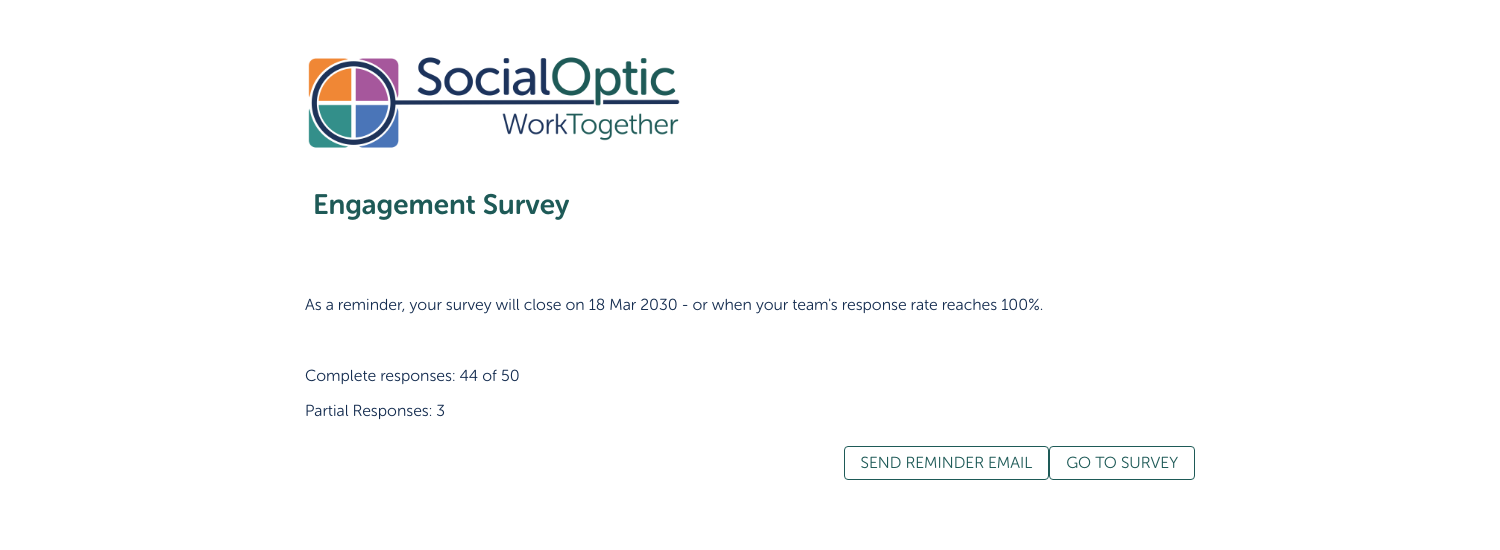
Once the Survey is closed, the {{{controls}}} substitution will display a [Send report] button. When clicked this will email the Survey Manager with a standard report (or a custom report if set up). If the survey does not have enough responses then a Manager Non-report email email will be sent. For further information on setting up manager emails, please refer to the "Manager Emails (from Template)" and "Manager Emails (from blank Survey)" documents.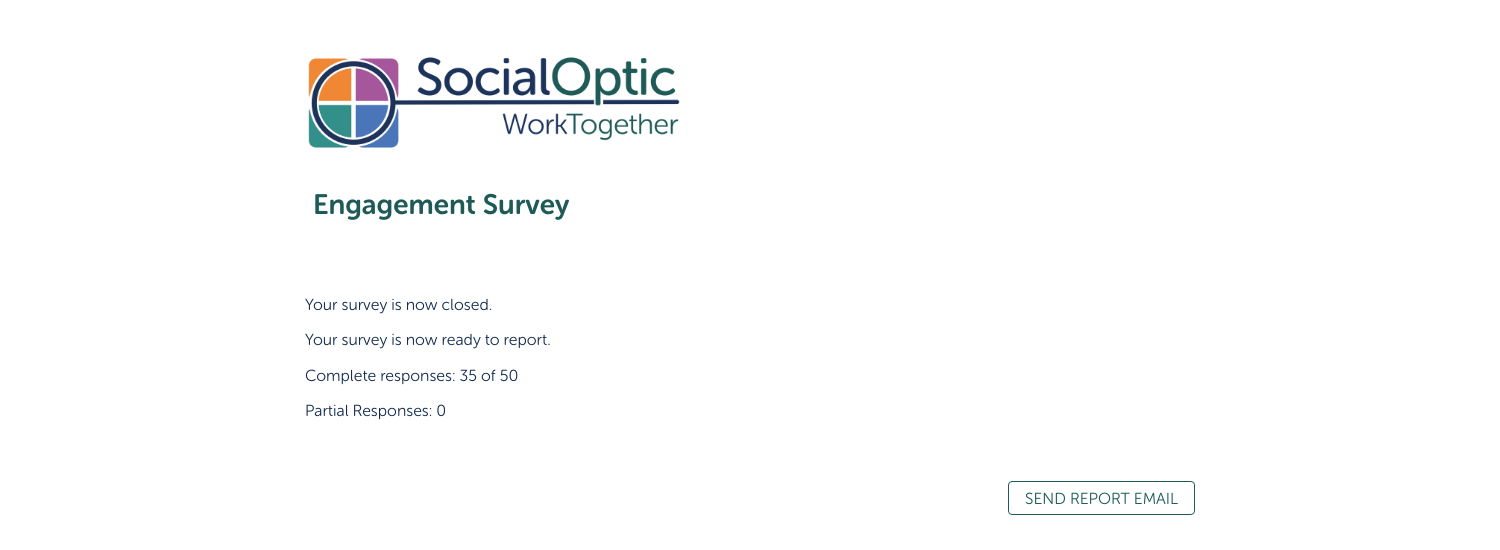
This example uses conditional substitutions again to dynamically change the text mentioning that the survey is "ready to report". This is achieved in the same way as before, but this time using "{{ready}}" status indicator substitutions. Done correctly, the text editor should look something like the below:
{{^closed}}As a reminder, your survey will close on {{closes}} - or when your team's response rate reaches 100%.{{/closed}}
{{#closed}}Your survey is now closed.{{/closed}}
{{^ready}}Your survey is not ready to report.{{/ready}}
{{#ready}}Your survey is now ready to report.{{/ready}}
Complete responses: {{complete}} of {{maxrespondents}}
Partial Responses: {{inprog}}
{{{controls}}}